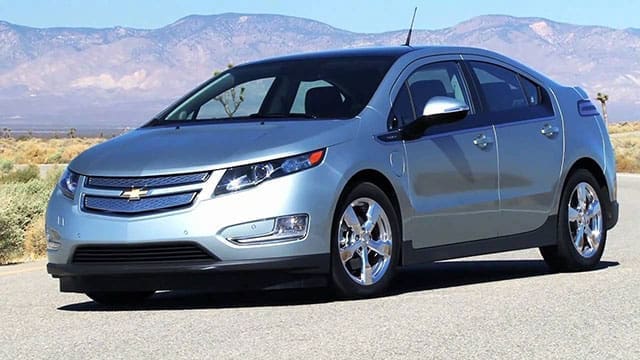The 2011 Chevrolet Volt has a potential lifespan of 200,000 to 300,000 miles

Like virtually all hybrids, the 2011 Chevrolet Volt features regenerative braking. When it decelerates, energy is captured and fed back into the batteries. There’s also a Sport setting that gives the car an extra shot of performance when climbing hills or overtaking.
 Hybrids with a few kilometres on them are making their way onto the used car market, and a little judicious shopping may get you something half-decent at a reasonable price.
Hybrids with a few kilometres on them are making their way onto the used car market, and a little judicious shopping may get you something half-decent at a reasonable price.
The 2011 Chevrolet Volt was introduced in 2010 and went on sale in 2011. Officially classed as a hybrid vehicle, it was a breed apart from conventional hybrid and electric cars.
A 1.4-litre gasoline engine supplements the Volt’s lithium-ion battery pack. However, unlike other hybrid cars – the Toyota Prius, for example – the Volt is designed to run on battery power alone for 60 km before the auxiliary gas engine kicks in.
Those initial 60 km are emission-free, regardless of the conditions. City or highway driving makes no difference, although the harder you drive it, the sooner the batteries discharge. When that happens, the gas engine comes into play and continuously recharges the battery pack while giving the car a purported driving range of some 640 km.
| 2011 USED CARS |
| MORE USED CARS |
| Chevrolet |
It takes three to eight hours to recharge the car, depending on the power source.
Like virtually all hybrids, the Volt features regenerative braking. When it decelerates, energy is captured and fed back into the batteries. There’s also a Sport setting that gives the car an extra shot of performance when climbing hills or overtaking, for example.
The Volt provides reasonable power and acceleration but is definitely not a performance car.
There was just one safety recall from Transport Canada to report in 2011, and it was a fairly minor one. Apparently, with some vehicles, the daytime running lights can be manually switched off and a new ignition key reprogrammed.
The National Highway Traffic Safety Administration (NHTSA) in the U.S. conducted a barrage of crash tests on the first Volts manufactured for the 2011 model year –14,735 in all – and found that a fire was possible in certain crash situations (side impact with a utility pole and vehicle rollover).
To quote NHTSA: “Coolant leakage, and subsequent rollover that saturates electronic components, were the only test conditions which resulted in a subject vehicle HV battery fire.” This was one of the most extensive investigations in NHTSA’s history.
NHTSA also has at least 40 technical service bulletins on file for the 2011 Volt. They cover issues ranging from non-charging to problems with the engine starting itself and running during a plug-in recharge to a myriad of electrical and computer-related issues.
Consumer Reports staff seem to like the idea behind the Volt but couldn’t bring themselves to fully endorse it. While praising its low operating costs and fundamentally sound design, CR criticized its peripheral visibility and practicality.
Still, it received top marks and a “better than average” used car prediction. Said CR: “We expect reliability of new models will be 36 percent above average.”
Some comments from owners, courtesy of CR:
Marketing researcher J.D. Power awarded the 2011 Volt its performance award, with a top rating for overall performance and design and a “better than most” grade for overall quality. However, this organization only rates the Volt “about average” for predicted reliability.
With careful usage and regular maintenance, a 2011 Chevrolet Volt can last between 200,000 and 300,000 miles before encountering significant issues with its hybrid powertrain and other costly components.
2011 Chevrolet Volt
Original base price: $41,545
Engine: Twin electric motors with supplemental 1.4-litre gas engine
Horsepower/torque: 149/273 foot pounds
Transmission: Electric drive
Fuel economy (litres/100 km): 6.7 city, 5.9 highway, with regular gas
Alternatives: Toyota Prius, Toyota Camry Hybrid, Mitsubishi i-Miev, Nissan Leaf, Honda Insight.
Ted Laturnus has been an automotive journalist since 1976. He has been named Canadian Automotive Journalist of the Year twice and is past president of the Automotive Journalists Association of Canada (AJAC).
For interview requests, click here.
The opinions expressed by our columnists and contributors are theirs alone and do not inherently or expressly reflect the views of our publication.
© Troy Media
Troy Media is an editorial content provider to media outlets and its own hosted community news outlets across Canada.

